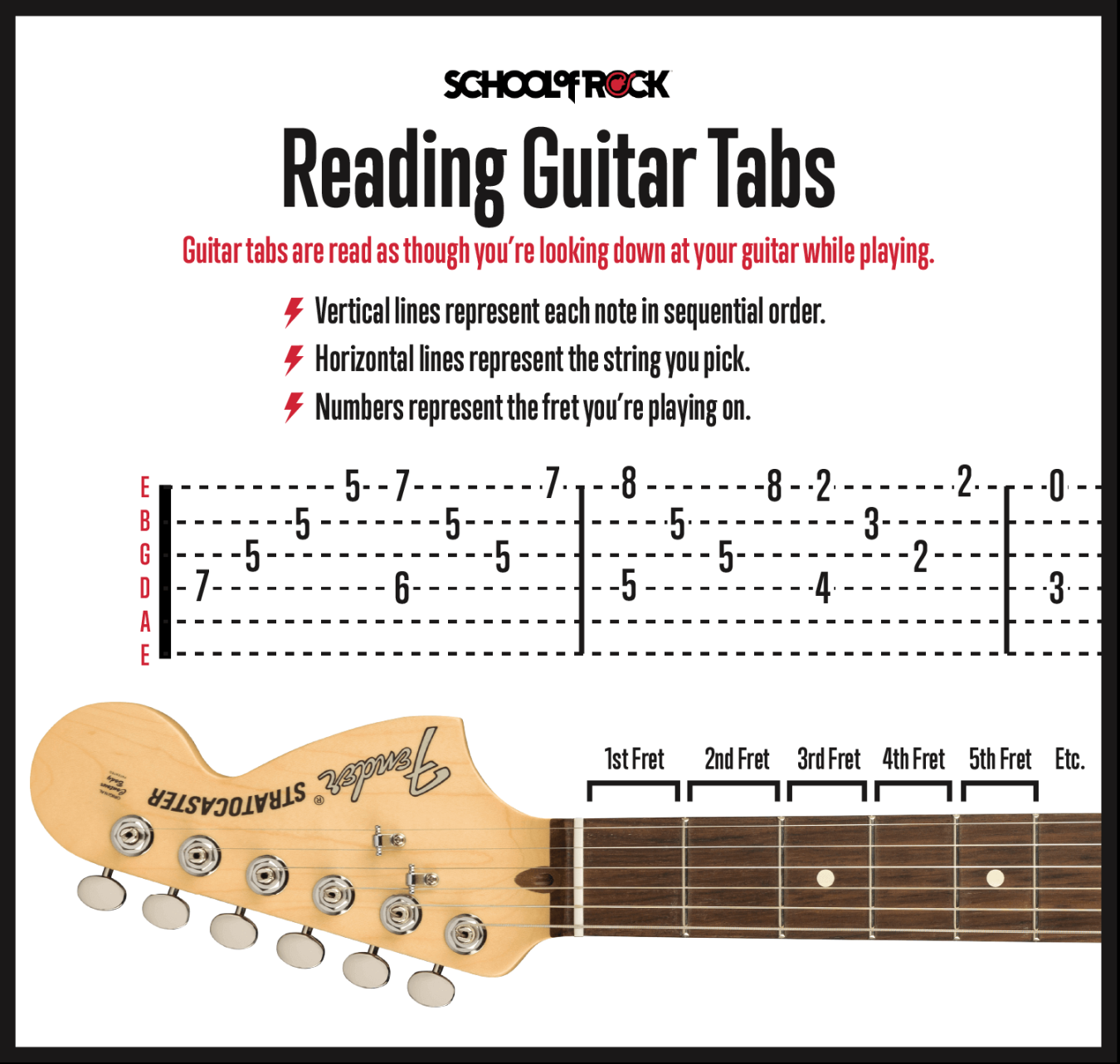—
Guitar Tabs: Your Quick Guide to Playing Your Favorite Tunes
So, you wanna learn to play guitar? Awesome! You’ve probably heard about guitar tabs, or tablature, and wondered what they’re all about. Well, think of them as a super-easy way to read guitar music. Instead of those fancy musical notes on a staff, tabs use numbers to show you exactly where to put your fingers on the fretboard. It’s like a guitar map, showing you the way to play your favorite songs.
What Are Guitar Tabs, Exactly?

Basically, a tab is a visual representation of the guitar strings and frets. You’ll see six lines, each representing a string on your guitar. The bottom line is the thickest string (the low E), and the top line is the thinnest string (the high E). Numbers on those lines tell you which fret to press down. A “0” means you play the open string, no fingers needed.
For example, if you see:
e|—0—3—5—|
B|—1—3—6—|
G|—0—0—5—|
D|—2—0—7—|
A|—3—2—7—|
E|—x—x—x—|
It means:
On the high E string, play the open string, then the 3rd fret, then the 5th fret.
It’s that simple.
Why Tabs Are Awesome for Beginners
Tabs are fantastic for beginners because they’re super visual. You don’t need to know how to read standard musical notation, which can be pretty daunting. You can just look at the numbers and start playing. This makes learning songs much quicker and more accessible. You can find tabs for just about any song online, from classic rock to pop hits.
Finding and Reading Tabs
The internet is your best friend here. There are tons of websites and apps that offer free guitar tabs. Just search for “[song name] guitar tabs,” and you’ll find plenty of options. When you find a tab, take a moment to understand the layout.
Understanding the Rhythm: Tabs mainly focus on the notes and where to play them. They often don’t show the exact rhythm. You’ll need to listen to the song to get the timing right. Some tabs include rhythm notation, but it’s not always the case.
Tips for Using Guitar Tabs Effectively
Listen to the Song: Always listen to the song you’re trying to learn. This will help you understand the rhythm and feel of the music. Tabs are great, but they don’t tell the whole story.
Common Tab Symbols Explained
Hammer-ons (h)
A hammer-on involves striking a note and then “hammering” down another finger on a higher fret on the same string without picking. It creates a smooth, connected sound.
Pull-offs (p)
A pull-off is the opposite of a hammer-on. You pluck a string and then pull off a finger to sound a lower note on the same string.
Bends (b)
A bend involves pushing or pulling a string to raise the pitch of a note. It’s a common technique in blues and rock guitar.
Slides (/ or )
A slide involves playing a note and then sliding your finger up or down the fretboard to another note.
Vibrato (~)
Vibrato is a slight, rapid variation in pitch. It adds a shimmering, expressive quality to your playing.
Muting (x)
An “x” on a tab line means you should mute that string, preventing it from ringing out.
The Limitations of Tabs
While tabs are incredibly helpful, they do have some limitations. As mentioned earlier, they often don’t show the exact rhythm. Also, they don’t tell you the specific fingerings or picking patterns. You’ll need to use your ears and experiment to find what works best.
Getting Started with Your First Song
Choose a simple song to start with. Look for tabs that are labeled as “beginner” or “easy.” Start by learning the main riff or chord progression. Focus on getting the notes right and playing in time. Don’t worry about playing it perfectly at first. Just have fun and enjoy the process.
Conclusion
Guitar tabs are an invaluable tool for any guitarist, especially beginners. They provide a simple and accessible way to learn and play your favorite songs. While they might not provide every single nuance of a song, they are a fantastic way to start playing quickly. By combining tabs with listening to the song and practicing regularly, you’ll be playing your favorite tunes in no time. So grab your guitar, find some tabs, and start jamming!

